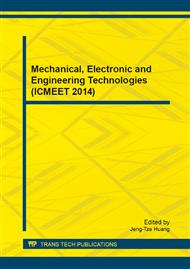p.32
p.36
p.40
p.44
p.48
p.54
p.58
p.62
p.68
Research on Methods of Improving Fatigue Property of Low-Strength Steel Welded Joints
Abstract:
TIG dressing combined with ultrasonic peening was conducted on low-strength steel Q235B in this paper, the fatigue strength of which was compared with original welding state, TIG dressing and ultrasonic peening respectively. The results indicate that fatigue strength of welded joints treated by TIG dressing is increased by 36%, composite processing method 57% and ultrasonic peening 56%, with little difference between composite processing method and ultrasonic peening in loading condition R=0.1. Stress concentration factor at weld toe treated by composite processing method is less than that by ultrasonic peening and with less residual compressive stress relief, the former is more effective in improving fatigue life at high stress level. Residual compressive stress at weld toe treated by composite processing is close to ultrasonic peening method and the effect of stress concentration is weakened, the two methods don’t appear to be much different.
Info:
Periodical:
Pages:
48-53
Citation:
Online since:
April 2014
Authors:
Price:
Сopyright:
© 2014 Trans Tech Publications Ltd. All Rights Reserved
Share:
Citation:


